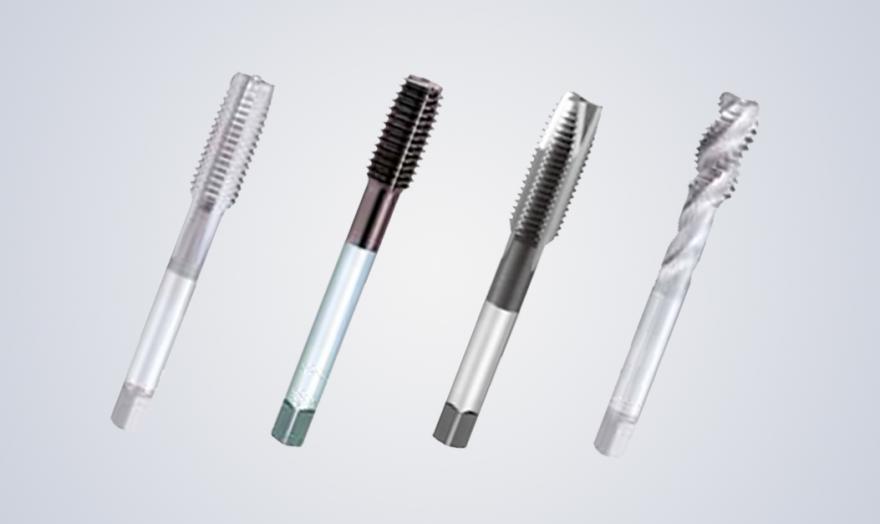Taps are essential tools used for threading, and they come in various types, each designed for specific applications. The main types of taps are spiral fluted taps , fluteless taps, spiral pointed taps, and straight fluted taps. Each type has unique characteristics and applications.

1. Spiral Fluted Taps
Spiral fluted taps feature a spiral flute design that ensures chips flow out against the tapping direction, ejected from the holes. This design results in lower tapping torque and makes the taps suitable for reaching the bottom of holes, providing good cutting action. They are ideal for blind holes and for materials where chips are continuously produced in a coil shape. This design not only improves chips flow out but also significantly reduces the risk of thread damage during the machining process, enhancing the quality and efficiency of threading.
2. Fluteless Taps
Fluteless taps also known as forming taps, are designed without flutes, meaning they do not produce chips. They offer precise uniformity of the tapped thread limit and exhibit excellent rigidity. Fluteless taps create threads by deforming the material of the hole wall through plastic deformation. They are mainly used for materials with good formability, such as aluminum alloys, copper, low carbon steel, and stainless steel. These taps are suitable for both through holes and blind holes and are ideal for applications requiring high-strength and high-precision threads.
3. Spiral Pointed Taps
Spiral pointed taps feature a spiral point, or chip drive, that pushes chips forward with low cutting torque. Their shallow and unique flute form provides a strong structure, ensuring good cutting action. They are ideal for through holes, materials where chips come out continuously in a coil shape, and high-speed tapping applications.This design ensures efficient chip removal, preventing the accumulation of chips in the machining area, thus improving threading efficiency and the quality of the threads.
4. Straight Fluted Taps
Straight fluted taps, also known as hand taps, feature straight flutes with strong cutting edges, making them suitable for various cutting conditions and easy to re-grind. They are ideal for both through holes and blind holes with short thread depths, materials where chips come out in powder form, and hard materials.Due to the limited chip storage space, the threading depth with straight fluted taps should not exceed twice the diameter of the thread to avoid chip buildup, which can damage the threads and even break the tap. Despite this limitation, straight fluted taps remain a popular choice due to their simplicity and broad applicability.
Conclusion
Each type of the taps offer unique features and benefits tailored to specific threading applications. By understanding the distinct advantages of the types, users can select the most appropriate tool for their specific machining needs, ensuring optimal performance and thread quality.



